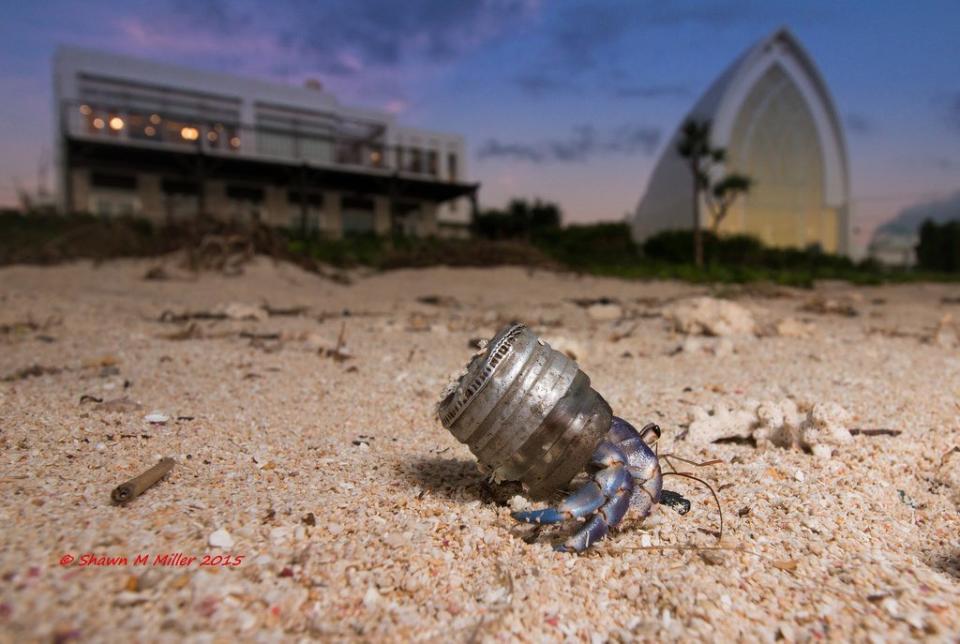This photographer captures images of hermit crabs using trash as homes

Shawn Miller
Hermit crabs get their name because of their tendency to conceal themselves inside of seashells, which they wear on their backs.
Often, they use the old shells of sea snails, and must seek out bigger and bigger shells as their bodies grow larger. But as humans have littered beaches and oceans with bottle caps and other bits of trash, some crabs have found homes in pieces of plastic or metal.
Shawn Miller, a wildlife photographer and naturalist living in Okinawa, Japan, has been finding and photographing crabs living in litter since 2010. Miller is the sponsor of the Okinawa Underwater Photographic Society, and his work has been featured in National Geographic and other publications.
His images of hermit crabs highlight the sad reality of our polluted waters, while simultaneously celebrating resilience and adaptation. Take a look.
Miller says he first noticed a hermit crab wearing trash as a home in 2010, and immediately took a second look.

“I was impressed that hermit crabs make due with available trash,” he tells Business Insider. “I was curious and wanted to learn more about this behavior.”

Since then, he’s been combing local beaches by night — most hermit crabs are nocturnal — and photographing the ones that use litter as homes. He says he’s found more than 40 of them so far.

In the years he’s been searching for crabs, Miller says he’s become aware of how polluted Japan’s beaches are.

“I noticed more trash piling up on our shorelines searching for hermit crabs, and realized it was a serious problem,” he says.

Miller plans to continue adding to the photo series as he finds more hermit crabs.

“I wanted to bring awareness to our pollution problems on our shorelines,” he says. “Hopefully these images will inspire people to care more about nature.”

The post This photographer captures images of hermit crabs using trash as homes appeared first on Business Insider.

 Yahoo Finance
Yahoo Finance 
